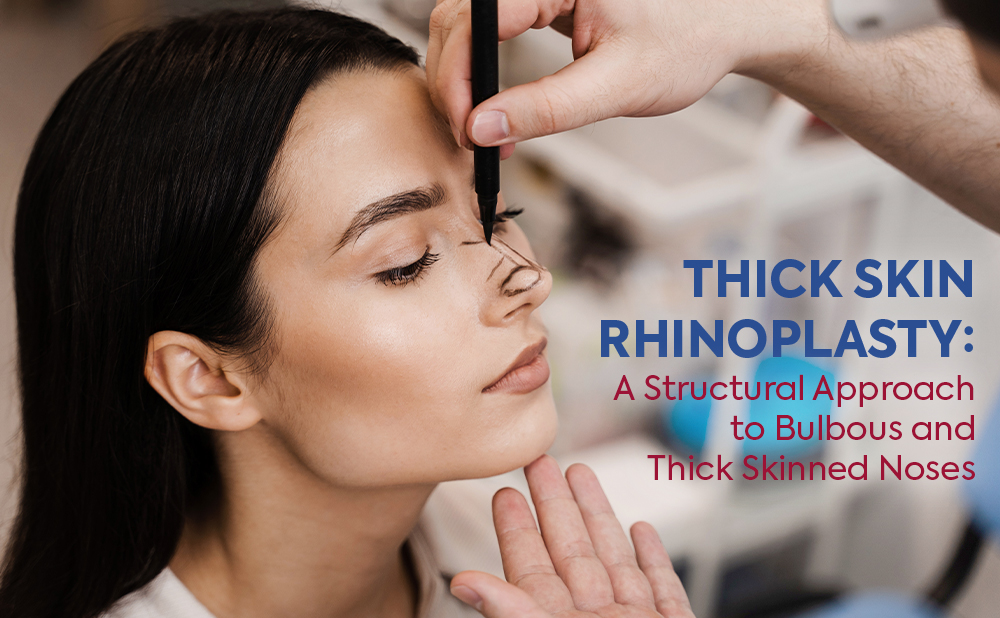
Thick skin rhinoplasty addresses one of the most nuanced challenges in nasal surgery: creating visible definition beneath a dense, sometimes oily skin envelope. Patients with thick skin often have features such as a bulbous tip, minimal contour in the lower third of the nose, or difficulty achieving refinement despite previous cosmetic efforts. These cases require a strategic approach that focuses less on cartilage removal and more on internal structure, support, and long term stability.
This article explains how thick skin affects surgical planning, how it differs from thin skin in recovery and outcomes, and what techniques are most effective in achieving balanced, natural results. Whether you’re considering rhinoplasty for a bulbous tip, ethnic nose refinement, or long-standing dissatisfaction with nasal definition, understanding the role of skin thickness is key to making an informed, realistic decision.
What Is Thick Skin Rhinoplasty?
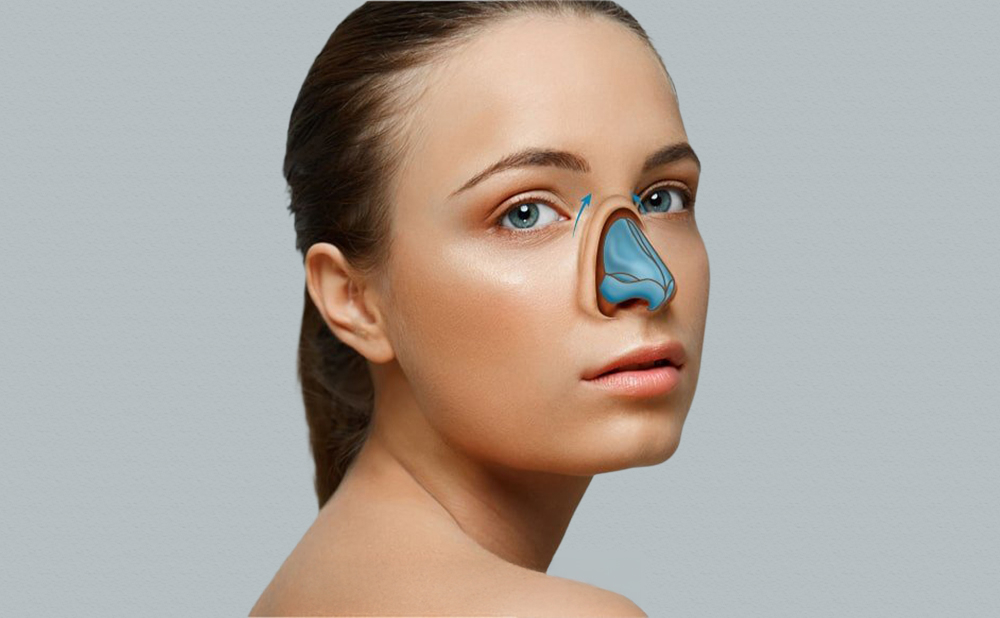
Thick skin rhinoplasty is not a separate procedure, but rather a tailored approach to rhinoplasty for patients whose nasal skin is dense, sebaceous, or heavy. While the goals of rhinoplasty remain the same, improving proportion, balance, and definition, the technique must adapt to the way thick skin responds to surgical change.
In these cases, surgeons focus less on subtractive methods and more on structural reinforcement. The cartilage beneath thick skin must be shaped and supported in a way that allows for visible refinement once the skin settles. This often involves tip grafts, stronger suturing techniques, and a careful approach to prevent long term swelling or scar tissue buildup.
This approach is especially common in patients with:
- A bulbous or rounded nasal tip
- Skin that feels firm, oily, or less flexible
- Limited natural nasal definition even at a healthy weight
- Ethnic features where the skin envelope is naturally thicker

The Role of Skin and Structure in Rhinoplasty Results
To understand how thick skin impacts rhinoplasty, it helps to consider the anatomy of the nose. Structurally, the nose consists of three key layers:
- Bone in the upper third
- Cartilage in the middle and lower thirds
- Soft tissue and skin forming the external envelope
Surgical refinement occurs beneath the skin. Bone and cartilage are reshaped to change the nose’s size, projection, and contour. In thin-skinned patients, these changes are easily visible because the skin conforms tightly to the new structure. In thick-skinned patients, the skin does not drape as easily, which can obscure delicate changes.
This is especially true in the nasal tip. The skin in this area is often thicker thus it is harder to define. As a result, surgeons must focus on structural techniques that enhance tip support and projection, helping the shape show through more effectively over time.
Thick Skin vs Thin Skin in Rhinoplasty: Key Surgical Differences
Skin thickness influences nearly every aspect of rhinoplasty, from surgical planning to final appearance. While thick skin can obscure subtle refinements, thin skin can do the opposite.
Key differences between thick and thin skin:
| Feature | Thick Skin | Thin Skin |
|---|---|---|
| Visibility of Detail | Lower, details may not show easily | High, minor asymmetries may be visible |
| Healing Timeline | Longer, with prolonged swelling | Faster, but more reactive to changes |
| Tip Definition | Requires structural support | Easier to shape, but risk of sharp edges |
| Risk Factor | Masked results or scar tissue buildup | Overdefined or irregular appearance |
What Does It Mean to Have Thick Nasal Skin?
Thick nasal skin is characterized by a dense dermal layer, often with a visibly textured or oily surface. It tends to be more common in patients with ethnic backgrounds such as Middle Eastern, African, South Asian, and certain Mediterranean groups.
For a deeper understanding of how cultural and anatomical diversity influences surgical planning, explore our article on Ethnic Rhinoplasty in Turkey: The Big Change With A Small Touch.
Common characteristics include:
- Minimal tip definition, even in slim individuals
- Heaviness or fullness in the lower third of the nose
- A more rounded or broad nasal shape at rest
- Resistance to seeing changes after minor cartilage adjustments
Surgeons assess skin thickness manually, often by gently pinching the nasal skin to feel its density and how much movement or elasticity it has. This informs not only the surgical technique but also the expected pace of healing and how clearly refinements will appear.
Approaching Bulbous Tip Correction in Thick Skinned Noses
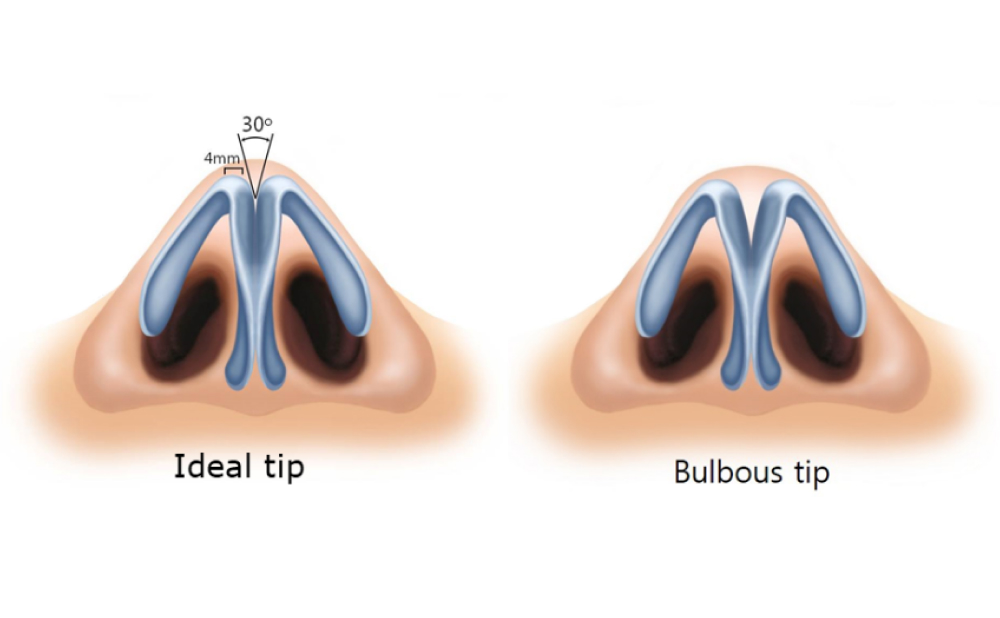
A bulbous nasal tip is one of the most common concerns among patients with thick skin. It presents as a rounded, wide, or undefined appearance at the tip, often made more prominent by the thickness of the overlying skin.
This is rarely due to skin alone. The shape is usually caused by large or poorly supported lower lateral cartilages combined with skin that fails to conform tightly.
Effective correction includes:
- Reshaping tip cartilage using suture techniques rather than excision
- Adding tip grafts to increase projection and push against heavy skin
- Stabilizing support structures such as columellar struts to prevent post-op collapse
Why Skin Quality Matters More Than Thickness Alone
Not all thick skin behaves the same way after rhinoplasty. While thickness is one factor, overall skin quality plays a critical role in healing, contour visibility, and long term outcomes.
Key elements of skin quality:
- Elasticity: Skin that stretches and returns to shape allows better adaptation to surgical changes
- Sebaceous content: Oilier skin may respond with longer-lasting swelling or increased scar tissue formation
- Healing behavior: Some patients are more prone to internal fibrosis, which can blunt results over time
During a consultation, a surgeon will assess not just the feel and thickness of the skin but how it moves and reacts. Skin that is thick but elastic, for example, may respond better than skin that is dense and immobile.
What Makes Rhinoplasty Different for Thick Skin Patients
Thick-skinned noses require a different surgical philosophy. While thinner skin reveals every contour, thick skin can conceal detail unless the underlying structure is strategically enhanced.
Surgeons avoid removing too much cartilage in these cases, as doing so can reduce definition rather than enhance it. Instead, they focus on:
- Building tip projection to support the weight of the skin
- Enhancing definition with precise suturing techniques
- Reinforcing nasal symmetry through internal grafting
Ultimately, the goal is to create a shape that will show through thick skin once swelling has resolved and the skin has settled.
Techniques That Work: How Surgeons Create Tip Definition
For thick-skinned patients, tip refinement depends on structural enhancement. Rather than focusing on subtraction, surgeons use grafts and sutures to define and project the tip beneath the heavier skin envelope.
Common techniques include:
- Tip grafting: Adding cartilage to create a stronger, more visible nasal tip
- Columellar strut grafts: Supporting projection and maintaining tip stability
- Dome suturing: Narrowing and shaping the tip cartilages for better definition
- Alar base adjustments: When nostril width contributes to visual imbalance
Soft tissue thinning may be used in select cases, but it must be approached with caution. Aggressive thinning can compromise skin health and lead to complications in healing.
Healing and Swelling: What to Expect with Thick Skin Rhinoplasty
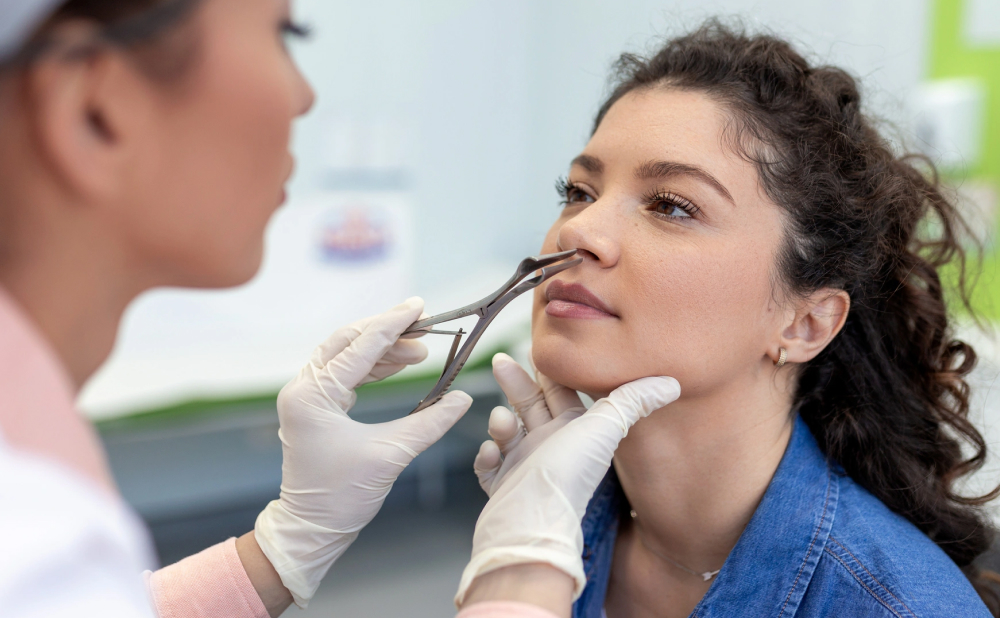
Post-operative recovery in thick-skinned rhinoplasty patients tends to follow a different timeline than in thinner-skinned cases. While initial recovery is similar, the duration of swelling and time to see final results are typically longer.
What to expect:
- Swelling lasts longer, particularly in the nasal tip, where skin is thickest
- Tip definition develops gradually, often taking several months to fully emerge
- Scar tissue may form more easily, which can obscure contour and slow visible improvement
Most patients notice early improvements after the first 4–6 weeks, but true definition, especially in the lower third of the nose, may not be fully visible until 6 to 12 months post surgery, or longer in some cases.
To learn more about managing discomfort and setting realistic expectations during recovery, read our guide: Does Rhinoplasty Hurt? Common Questions About Pain and Recovery.
Can Fillers Help with Thick Skin Rhinoplasty? Non-Surgical Options for Thick Skin Noses

Non-surgical rhinoplasty using dermal fillers can offer temporary improvements in certain nasal features. However, in patients with thick skin, these results are limited.
When it may help:
- Filling minor depressions or irregularities on the nasal bridge
- Improving symmetry or profile smoothness
- Temporary enhancement in patients not ready for surgery
When it likely won’t:
- Refining the nasal tip
- Creating visible projection under dense skin
- Addressing structural or support based issues
Fillers add volume but do not remove or reshape tissue, which is often what thick-skinned patients actually need. In most cases, structural surgical intervention remains the more effective and lasting solution.
The Outcome: What Results Look Like in Thick Skin Rhinoplasty Cases
Rhinoplasty in patients with thick skin yields improvement that is typically more subtle and natural than dramatic. Instead of sharp contours, the goal is balanced proportions, better tip support, and a more refined overall nasal shape.
To see real examples of thick and ethnic nose types refined with expert techniques, visit our Rhinoplasty Before & After gallery for patient photos and outcomes.
Typical improvements:
- A narrower and more defined nasal tip
- Smoother transition from bridge to tip
- Improved nasal symmetry in front and side views
- A nose that complements the rest of the facial features
Final results take longer to settle, but with the right approach, thick-skinned patients can expect clear, lasting enhancement. The key is setting realistic expectations and choosing a surgeon experienced in these more complex cases. Understanding what constitutes an ideal nose shape can help set realistic goals. Discover more in our article: Can Everyone Get a Perfect Nose Shape? What Is the Ideal Nose?.
Why Thick Skin Rhinoplasty Requires Surgical Expertise
When it comes to thick skin rhinoplasty, the skill and experience of the surgeon are non-negotiable. These cases demand not only an advanced understanding of nasal anatomy but also a refined ability to work with resistant soft tissue, unpredictable swelling, and long-term structural balance.
At MCAN Health, our board-certified plastic surgeons specialize in thick skin and ethnic rhinoplasty. We approach each case with a deep understanding of how to shape, support, and refine noses that require more than a standard technique. Our results are backed by thousands of successful procedures, customized surgical planning, and follow-up care that extends beyond the operating room.
What to look for in your surgeon:
- Experience with thick skin and ethnic nose types
- Before and after photos of similar patients
- A conservative, support based surgical philosophy
- Transparent guidance on healing time and outcomes
MCAN Health combines this expertise with a patient-first experience from virtual consultations to post-op support at our accredited facilities in Istanbul.
Thick Skin Rhinoplasty in Turkey with MCAN Health
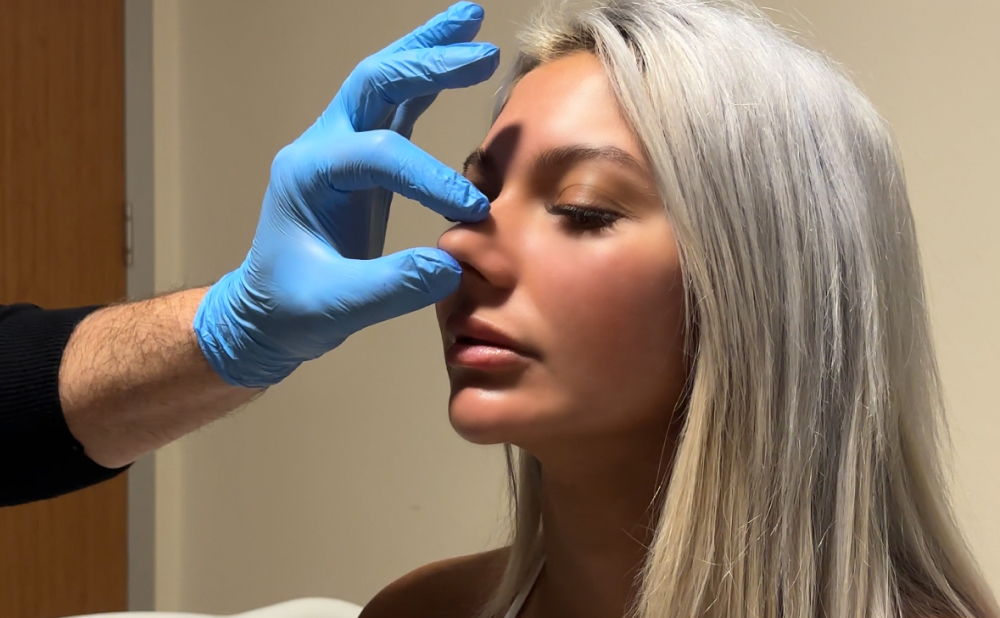
Thick skin does not mean you can’t have the rhinoplasty results you want. It simply means your procedure must be planned and performed with more precision, experience, and follow-through.
At MCAN Health, we provide:
- All-inclusive packages with surgery, accommodation, transfers, and nurse support
- Rhinoplasty experts with experience in ethnic and thick-skinned noses
- Accredited hospitals equipped with advanced surgical technologies
- Comprehensive aftercare, including in-hotel nurse visits and recovery guidance
- UK-based aftercare office for seamless support after you return home
If you’re ready to explore what’s possible with the right plan for rhinoplasty in Turkey and the right team, contact MCAN Health today.
Frequently Asked Questions About Thick Skin Rhinoplasty
Is rhinoplasty more difficult for patients with thick skin?
It can be more technically complex, yes. Thick skin tends to mask fine structural changes, especially in the nasal tip, which means the surgeon must rely on strong internal support and projection to achieve visible results.
How long does it take to see final results with thick skin?
Swelling in thick skin can last longer, particularly at the tip. While early improvements are visible within a few months, the final result often continues to refine over 12 to 18 months.
Can thick skin be thinned during surgery?
In select cases, yes—but this must be done very cautiously. Overthinning can compromise skin health and healing. Most surgeons prefer to focus on shaping the cartilage underneath rather than removing skin tissue directly.
Is non-surgical rhinoplasty a good option for thick skinned patients?
Not usually. Dermal fillers can help smooth a dorsal hump or add balance to the nasal bridge, but they do not improve tip definition or address the underlying structural issues that thick skin typically requires.
Will my results look natural if I have thick skin?
Yes, with proper technique. The goal in thick skin rhinoplasty is not drastic alteration but refined contour and better proportion. With time and the right surgical approach, results are both visible and natural looking.
What kind of surgeon should I look for?
Choose a surgeon experienced in ethnic rhinoplasty and thick skin cases. At MCAN Health, our surgeons routinely work with complex nose types and apply techniques specifically designed for thick, resistant skin envelopes.
Am I still a candidate for rhinoplasty if I have very thick skin?
Most likely, yes. Thick skin requires a modified approach, not disqualification. A qualified surgeon can assess your anatomy and recommend a plan that fits your goals and healing profile.
Does thick skin rhinoplasty leave more visible scars?
No, the incisions used in thick skin rhinoplasty are typically the same as in other rhinoplasty procedures and are placed in discreet locations. Healing depends more on individual skin behavior than thickness alone, and MCAN Health provides guidance on scar management throughout recovery.
Is thick skin rhinoplasty more expensive than standard rhinoplasty?
The cost of thick skin rhinoplasty is generally in line with other surgical nose procedures, but the complexity may slightly influence pricing depending on the techniques used. At MCAN Health, all-inclusive packages provide transparent pricing with no hidden fees.
 10 Things to Consider Before Hair Transplant
10 Things to Consider Before Hair Transplant  Trichotillomania (Hair Pulling Disorder) – Do You Think You Have It?
Trichotillomania (Hair Pulling Disorder) – Do You Think You Have It?  How Many Grafts Needed For A Good Hair Transplant?
How Many Grafts Needed For A Good Hair Transplant?